Nestled in the hills above the French Riviera, about 20 kilometers inland from Cannes, lies a town that has captivated the senses for over four centuries. Grasse isn't plastered across every travel brochure, and you won't find it overcrowded with tour buses—and that's exactly what makes it special. This medieval Provençal town has been the heart of the world's perfume industry since the 16th century, yet it remains refreshingly authentic, offering visitors a chance to experience France at its most fragrant and charming.
A Town Built on Scent
Walking through Grasse feels like stepping into a living museum where history isn't just preserved—it's still being created every day. The old town's narrow cobblestone streets wind through centuries-old buildings painted in warm ochres and sun-bleached pinks, their shutters thrown open to reveal glimpses of daily Provençal life. But what truly sets Grasse apart is the invisible thread that ties everything together: scent.
The town's perfume legacy began somewhat accidentally. In the 16th century, Grasse was known for leather tanning, particularly gloves. When Catherine de Medici popularized scented gloves at the French court, local artisans began experimenting with perfume. The surrounding countryside, blessed with ideal climate and soil conditions, proved perfect for cultivating jasmine, roses, violets, and lavender. Within a century, Grasse had pivoted from leather to perfume, and the rest is aromatic history.

Today, two-thirds of France's natural aromas are still produced in Grasse, and the town supplies raw materials and compounds to perfume houses worldwide. Chanel No. 5, Dior's J'adore, and countless other iconic fragrances have their origins in these hillside workshops.
The Perfume Houses You Can't Miss
Parfumerie Fragonard
The Fragonard perfume factory is perhaps the most accessible introduction to Grasse's perfume heritage. Named after the town's famous Rococo painter Jean-Honoré Fragonard, this family-owned perfumery has been operating since 1926. The factory offers free guided tours that take you through the entire perfume-making process, from distillation to bottling.
What makes Fragonard special is how hands-on the experience feels. You'll see copper stills that look like they belong in an alchemist's laboratory, rooms filled with thousands of raw materials, and skilled perfumers—or "noses"—at work creating new fragrances. The tour concludes in a beautiful boutique where you can purchase everything from perfumes to scented soaps, all at factory prices.

Parfumerie Molinard
Established in 1849, Molinard is Grasse's oldest perfume house still in operation. Their factory and boutique feel slightly more intimate than Fragonard, and they offer something truly special: the chance to create your own perfume in their Studio des Fragrances.
During a two-hour workshop, you'll work with a professional perfumer to blend your own 50ml fragrance from a selection of dozens of essences. You'll learn about top notes, heart notes, and base notes, discovering why certain scents work together while others clash. It's an experience that transforms perfume from a consumer product into an art form you truly understand.
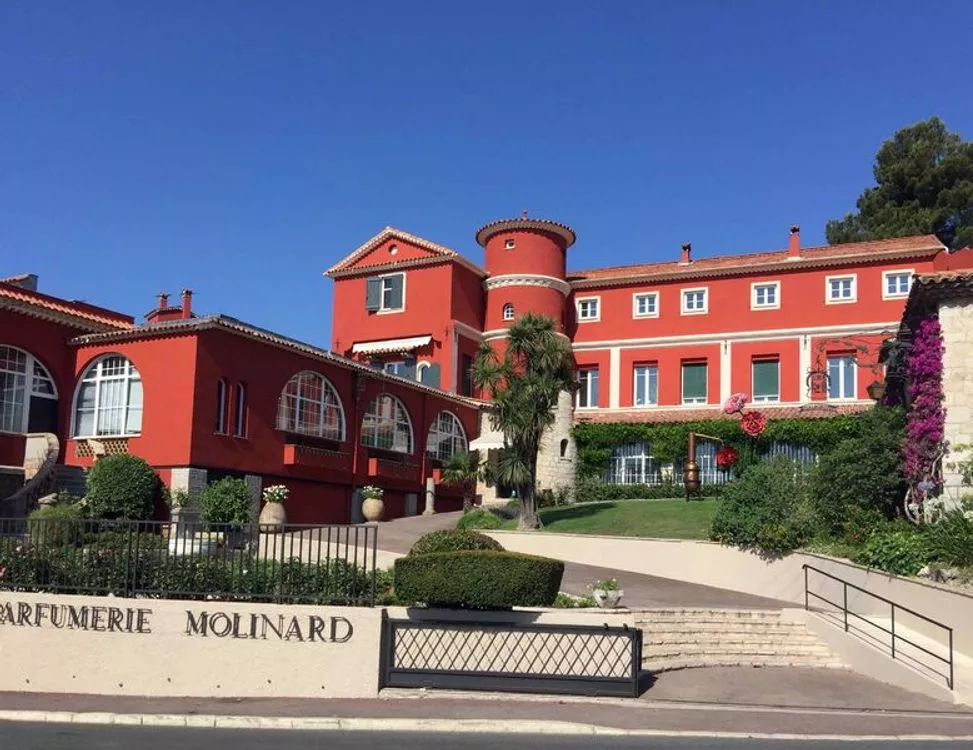
Parfumerie Galimard
Founded in 1747, Galimard is the oldest of Grasse's major perfume houses. Their historical perfume museum is a treasure trove of antique bottles, vintage advertisements, and original distillation equipment. The collection includes perfume containers dating back to ancient Egypt, showing how humanity's love affair with scent spans millennia.
Galimard also offers perfume-making workshops, including a wonderful option where you can create custom scents for your home. Their gardens, where they grow many of their raw materials, are open for visits during blooming season—typically May through October.
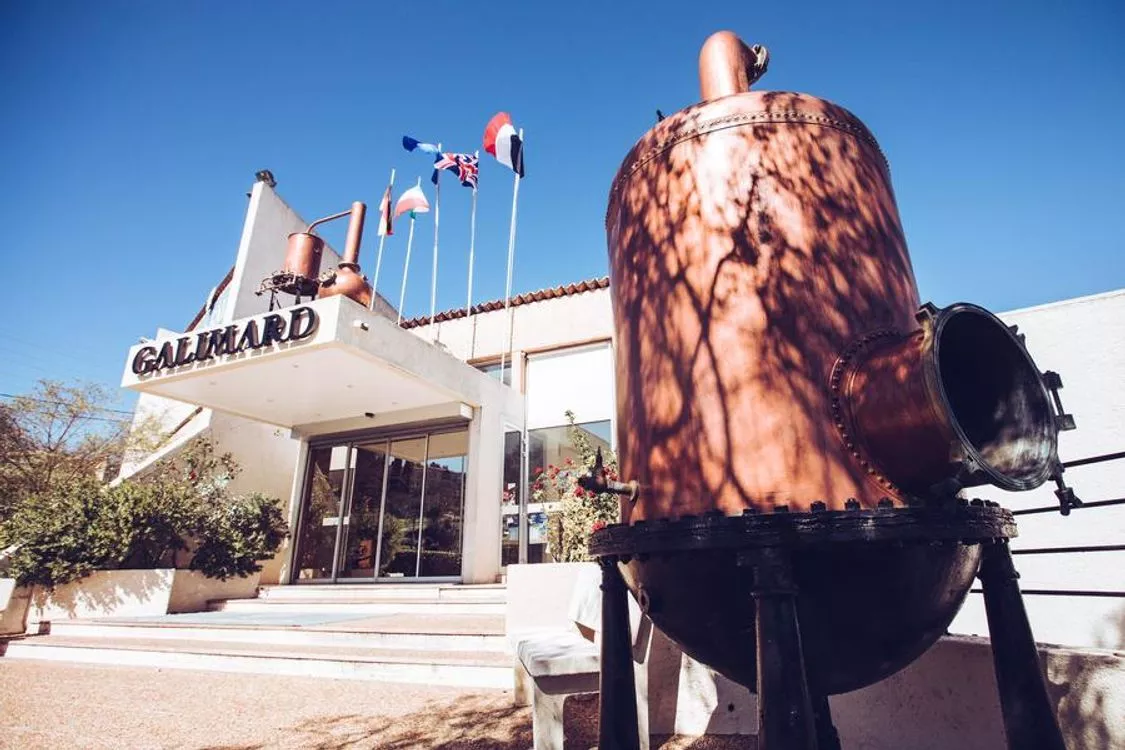
The International Perfume Museum
For a comprehensive understanding of perfume's role in human culture, the Musée International de la Parfumerie is absolutely essential. This modern, beautifully designed museum traces 4,000 years of perfume history across four floors. You'll find ancient Egyptian kohl containers, Marie Antoinette's personal perfume travel case, Art Nouveau atomizers, and contemporary perfume bottles designed by famous artists.
The museum also explores the botany and chemistry of perfume, showing how plants are transformed into essences and how synthetic molecules revolutionized the industry. Interactive exhibits let you identify scents, compare natural and synthetic versions, and understand how our sense of smell works. The rooftop offers stunning views over the town and toward the Mediterranean.
Plan to spend at least two hours here—it's remarkably engaging even for visitors who thought they'd never be interested in perfume.
Beyond Perfume: Grasse's Old Town
While perfume is Grasse's claim to fame, the medieval old town deserves equal attention. Start at Place aux Aires, the town's main square, which hosts a vibrant morning market every Saturday. Here you'll find vendors selling everything from local honey and olive oil to lavender sachets and handmade soaps—all beautifully fragrant, naturally.
The Cathedral of Notre-Dame-du-Puy dominates one side of the square. This 12th-century Romanesque cathedral houses three paintings by Rubens and a rare religious work by Fragonard. Its austere stone exterior contrasts beautifully with the warm, intimate interior.
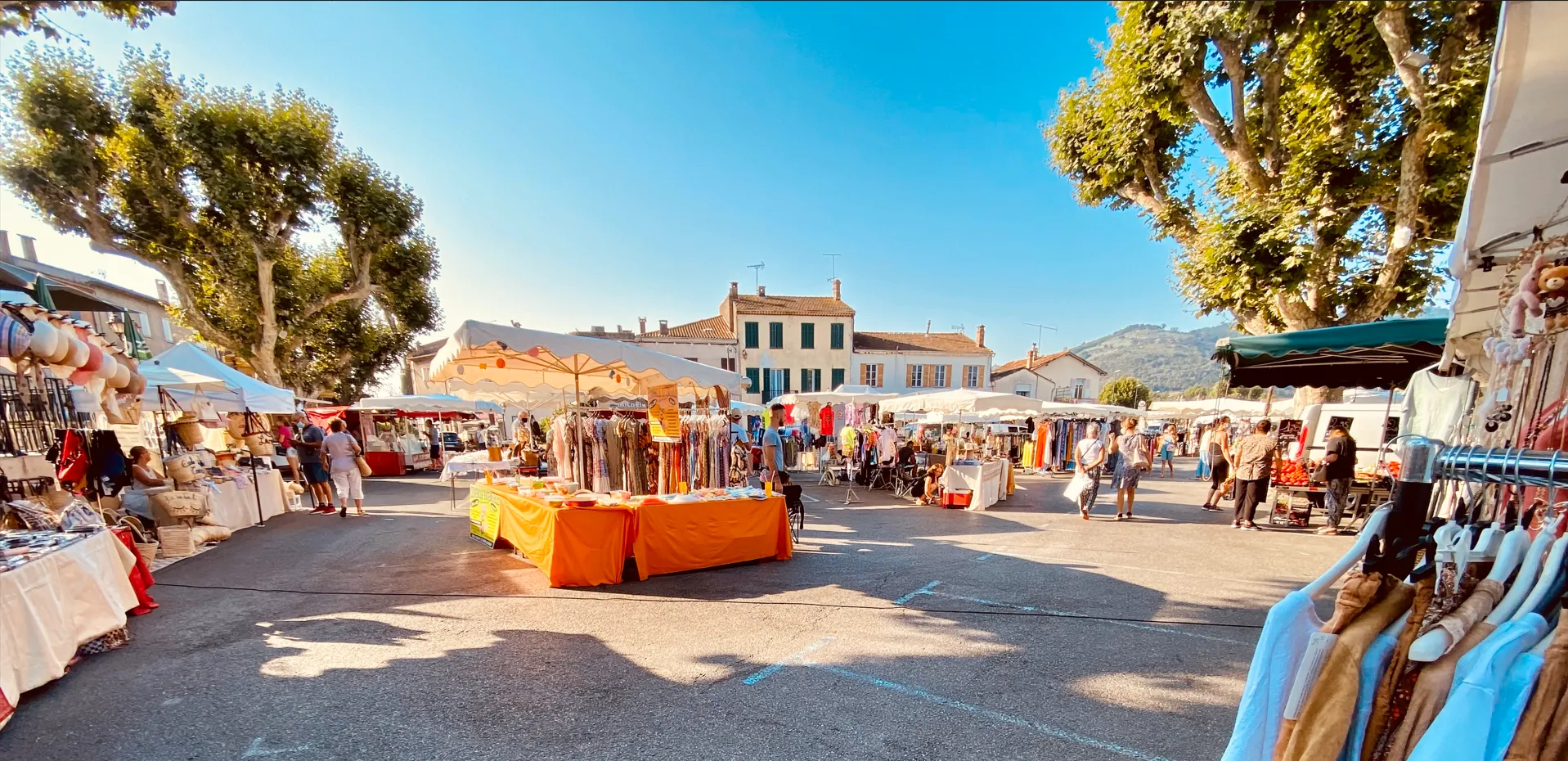
Wander the surrounding streets without a map—getting lost in Grasse's old town is half the pleasure. You'll discover tiny artisan boutiques selling handmade ceramics, vintage Provençal linens, and locally made jewelry. Small galleries showcase work by regional artists, and family-run restaurants spill out onto pocket-sized squares.
Villa Musée Fragonard
Art lovers shouldn't miss the Villa Fragonard, the 18th-century country house where Jean-Honoré Fragonard spent his final years. The villa contains several of his works, including a series of paintings he created for Madame du Barry that were rejected—reportedly because they were too frivolous for the aging royal mistress.
The villa's gardens are equally impressive, offering shaded terraces perfect for contemplating the artistic legacy of this Rococo master while enjoying panoramic views of the countryside.

Where to Stay
Hôtel La Bellaudière
This charming three-star boutique hotel occupies an 18th-century mansion in the heart of the old town. The 17 rooms blend period features like exposed beams and stone walls with modern comfort. Some rooms offer balconies overlooking the terracotta rooftops of Grasse. The location puts you steps from the perfume houses and museums, and the staff's local knowledge is invaluable.
La Bastide Saint-Antoine
For those seeking luxury, this five-star Relais & Châteaux property is exceptional. Set in an 18th-century bastide surrounded by olive groves and rose gardens, it features an award-winning restaurant helmed by Michelin-starred chef Jacques Chibois. The spa uses locally produced fragrances and essential oils in its treatments. It's pricey but utterly memorable.
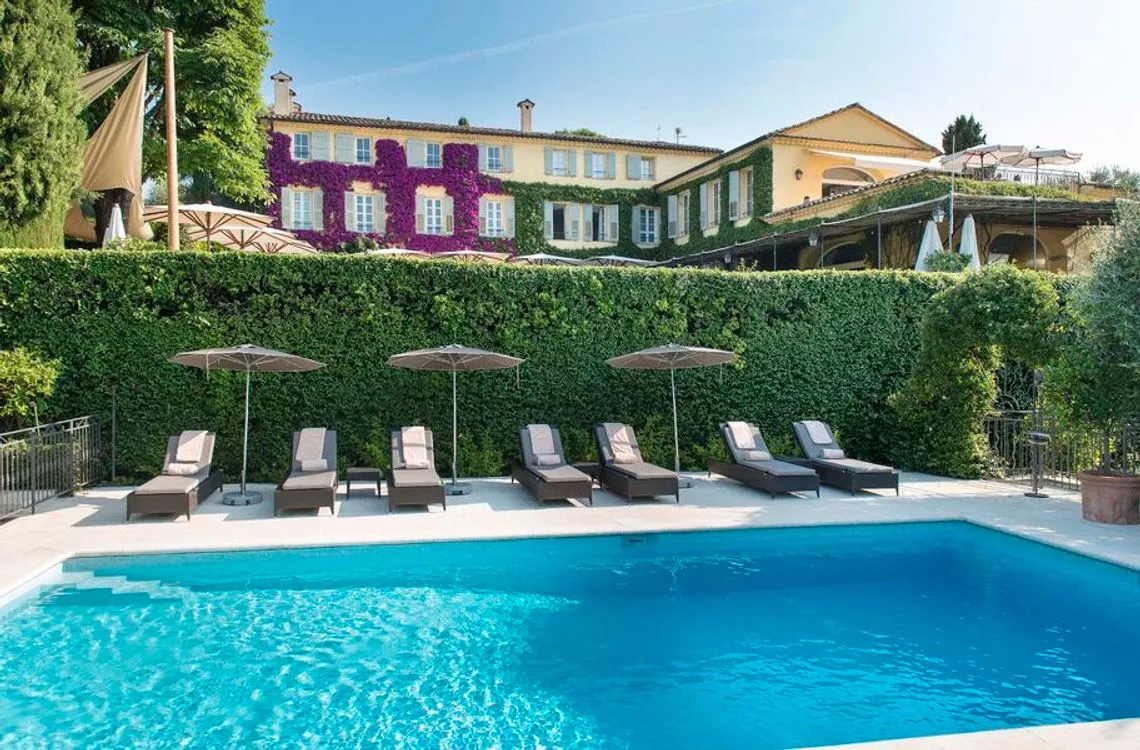
Le Patti Hôtel
This contemporary three-star hotel on the outskirts of Grasse offers excellent value. The modern rooms feature minimalist design and large windows. While it lacks old-world charm, it provides a peaceful base with free parking—a genuine advantage when exploring the region by car. The outdoor pool is perfect for cooling off after a day of sightseeing.
Dining in Grasse
Provençal cuisine shines in Grasse, where restaurants focus on seasonal ingredients and traditional recipes. Lou Fassum serves authentic local dishes in a cozy dining room—try their petits farcis (stuffed vegetables) or daube provençale (slow-cooked beef stew). La Table d'Yves offers innovative takes on regional classics in a more upscale setting.
For casual dining, grab a seat at one of the cafés along Place aux Aires and order a simple but perfect meal: a niçoise salad, a glass of Côtes de Provence rosé, and a bowl of strawberries from nearby Carros. The ingredients speak for themselves.
Don't leave without trying fougasse, a Provençal flatbread often flavored with olives, anchovies, or herbs. The bakeries around the old town prepare it fresh daily, and it's perfect for picnicking in one of the nearby parks.

Day Trips from Grasse
Grasse's location makes it an ideal base for exploring the region. The medieval village of Gourdon, perched on a rocky outcrop just 15 minutes away, offers spectacular views and artisan workshops. The village has been classified as one of the most beautiful villages in France, and wandering its ancient streets feels like time travel.
The Gorges du Loup, a 20-minute drive north, provides dramatic scenery with waterfalls, pools, and hiking trails. The Cascade de Courmes is particularly stunning—a waterfall that plunges into an emerald pool surrounded by limestone cliffs.
Cannes and the beaches of the French Riviera are just 30 minutes south when you need a coastal fix. Antibes, with its Picasso Museum and yacht-filled harbor, makes another excellent half-day excursion.
The Jasmine and Rose Harvests
If you can time your visit to Grasse between May and October, you'll witness something extraordinary: the flower harvests that still supply the perfume houses. Jasmine must be picked before dawn when the flowers hold maximum fragrance. It takes 8,000 jasmine flowers to produce just one gram of absolute—the highly concentrated aromatic essence.
The Fête du Jasmin (Jasmine Festival) in early August celebrates this tradition with parades, music, and flower-throwing from decorated floats. It's wonderfully festive and decidedly local—you won't find many international tourists here.
May brings the Expo Rose, when Grasse's gardens are at their most spectacular. The Centifolia roses—so named because they have "a hundred petals"—bloom in shades from pale pink to deep crimson, filling the air with their intoxicating perfume. Several perfumeries open their private gardens to visitors during this month.
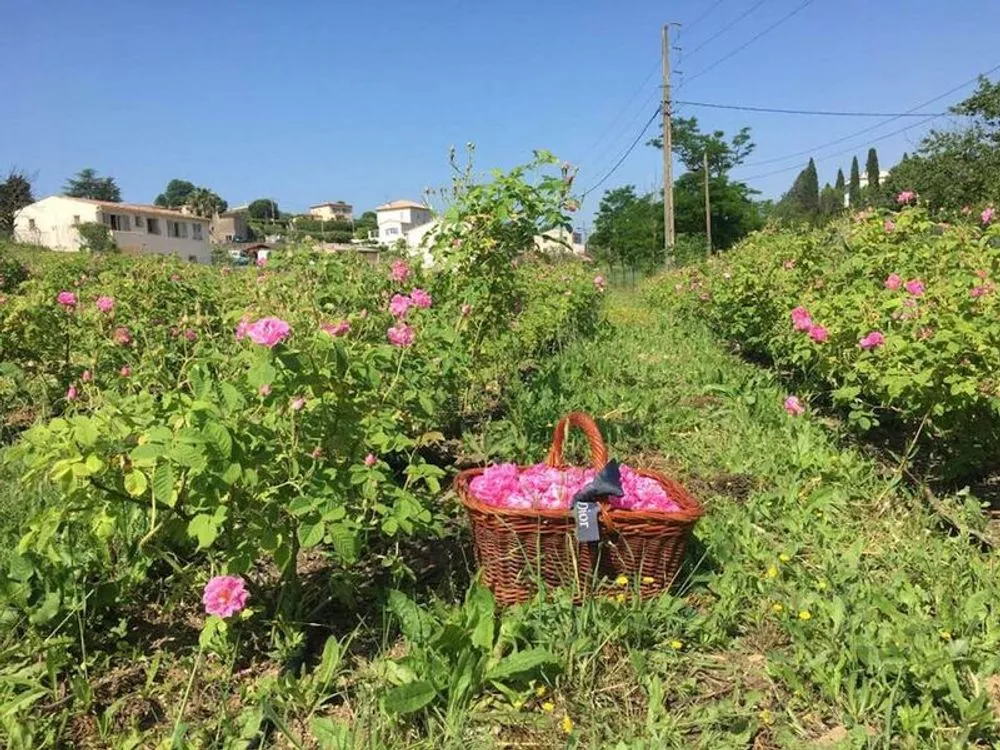
Practical Information
Getting to Grasse is straightforward. The town sits about 40 kilometers from Nice Côte d'Azur Airport. You can rent a car (recommended for exploring the region), take a taxi, or catch a bus. The train from Nice takes about an hour and offers beautiful coastal and mountain views along the way, though the station sits below the town requiring a bus or taxi to reach the center.
Parking in the old town can be challenging. Your best bet is the underground parking at Notre-Dame-du-Puy or the lot near the Palais des Congrès, both within easy walking distance of the main attractions.
Most perfume factories and museums close on Sundays, though some open on summer Sundays. Monday mornings can also see reduced hours. The perfume houses offer free tours in multiple languages throughout the day—just show up, no reservation needed.
Why Grasse Deserves Your Time
In a region sometimes overwhelmed by tourism, Grasse remains genuinely itself. Yes, it welcomes visitors to its perfume houses and museums, but it hasn't transformed into a theme park version of a French town. People still hang laundry from their windows, shop for vegetables at the market, and gather in cafés to discuss local news over espresso.
The authenticity of daily life coexists beautifully with the town's extraordinary heritage. You'll smell perfume being created, yes, but you'll also smell bread baking, coffee brewing, and flowers blooming in hidden courtyards. You'll tour museums but also stumble upon tiny squares where old men play pétanque in the afternoon shade.
Grasse offers what the best travel experiences always provide: the chance to see a place that does something better than anywhere else while remaining connected to centuries of tradition. The perfume industry here isn't a historic curiosity—it's a living art form practiced by skilled artisans who've inherited techniques passed down through generations.
Whether you spend a day or a week, whether you come for the perfume or the medieval architecture or simply the view, Grasse will surprise you. It's a town that reveals itself slowly, through scent and story, through narrow streets and unexpected vistas. And long after you've left, you'll catch a hint of jasmine or rose somewhere, and you'll be transported back to those sun-warmed hills above the Mediterranean where perfume has been poetry for 400 years.






.webp)
.webp)